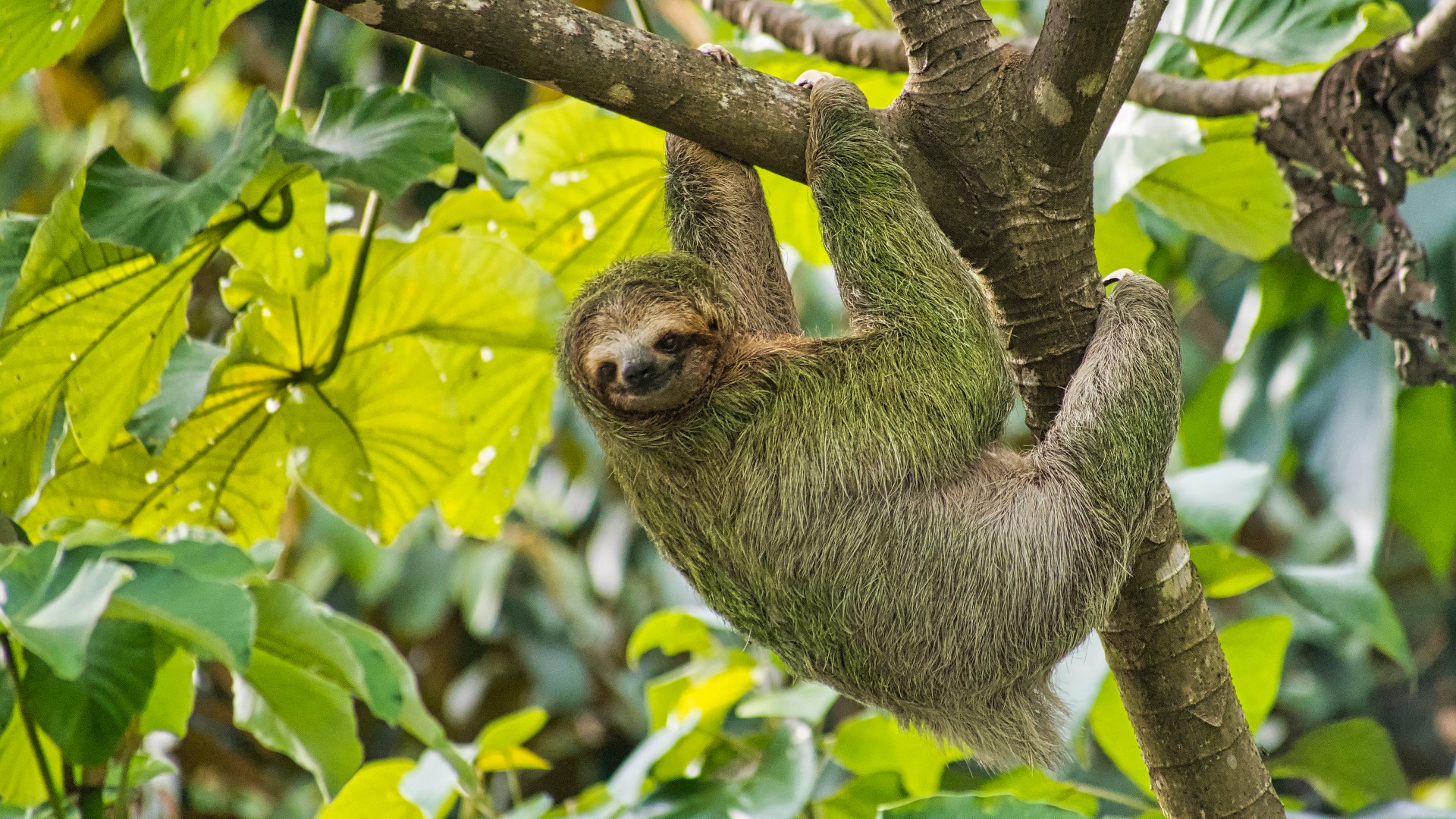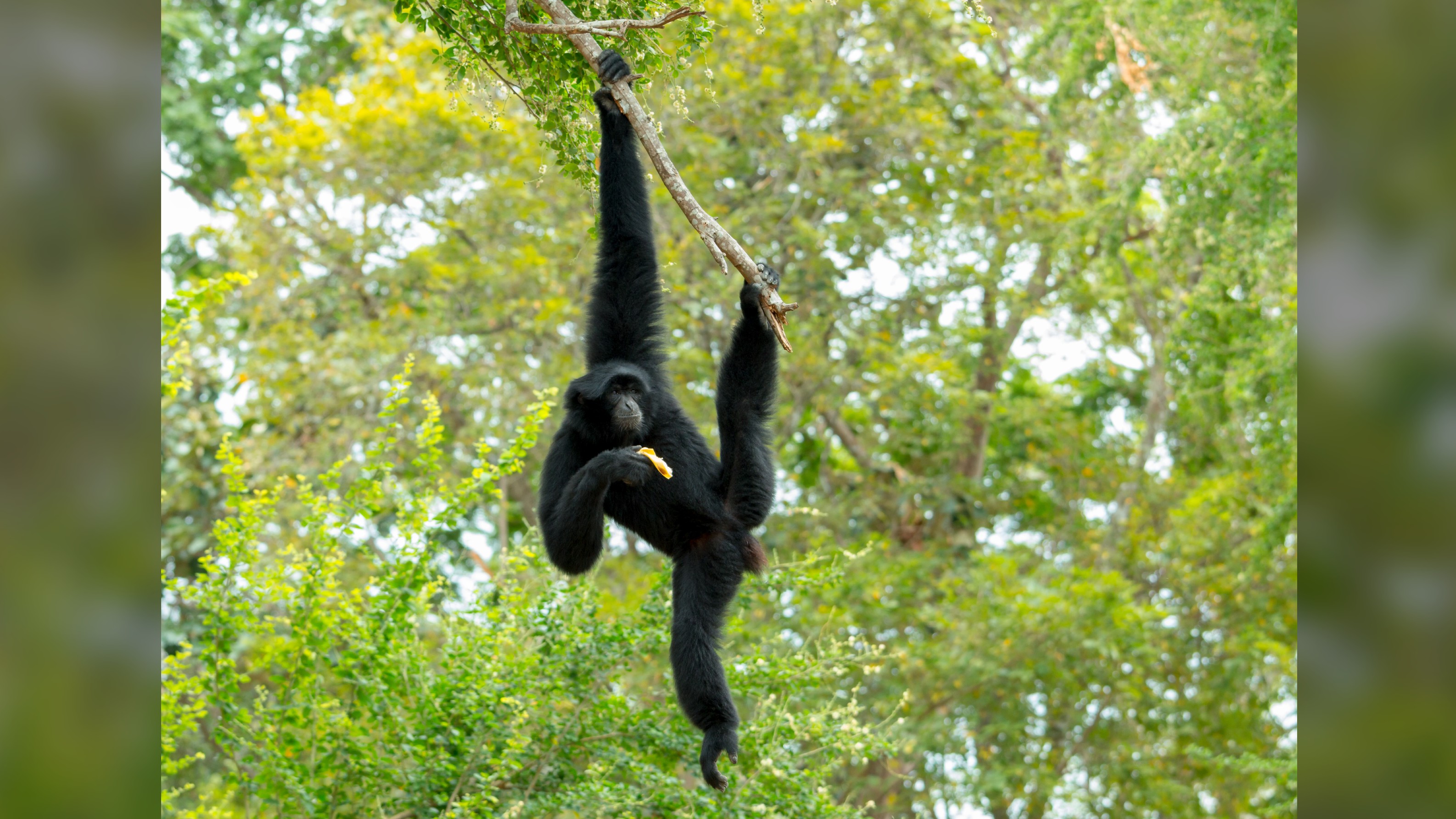
Which animals have the longest arms?
Relative to body size.

Which animals have the longest arms?
Based on size alone, humpback whales (Megaptera novaeangliae) would easily crush all other competition with their massive flippers, which evolved from the arms of their terrestrial mammalian ancestors and can measure up to 16 feet (4.9 meters) long.
But when it comes to relative size, two types of mammals take the cake among non-flying animals. A cursory search might point toward gibbons, a family of branch-swinging apes that live in the canopies of forests across southeast Asia, as having the longest arms relative to body size. However, a few species of three-toed sloths actually rank first, according to Mary Ellen Holden, a zoologist and mammalogist at the American Museum of Natural History in New York City.
Related: What animal has the largest ears?
A key proportion for the comparison of mammalian limbs is the intermembral (IM) index — the length of an animal's forelimbs divided by the length of its hind limbs, multiplied by 100. Humans have an IM index of around 68 to 70, meaning our arms are about 70% as long as our legs.
The IM index of an animal, alive or fossilized, is an indicator of which limbs it uses to get around. Bipeds, as well as animals that climb and leap, generally have IM indexes ranging from 50 to 80, followed by quadrupeds, at 80 to 100. North of 100, IM indexes tend to correlate with suspensory motion — including swinging from trees, otherwise known as brachiated motion. Longer forelimbs can also correlate with knuckle walking, a method used by great apes such as chimpanzees (Pan troglodytes), and unusual gait patterns, like those of hyenas, Holden said, which have sloped backs and tend to lope forward at speeds where other quadrupeds would trot.

Gibbons, with arms roughly 1.5 times the length of their legs, rank among the best contenders for highest IM index among primates. Siamang (Symphalangus syndactylus), a gibbon species found in Thailand, Indonesia and Malaysia; and the critically endangered black crested gibbon (Nomascus concolor), found in China, Laos and northern Vietnam; swing in with average IM indexes of 140 and 147, respectively. For comparison's sake, humans with those proportions would have arms nearly twice their current length.
Sign up for the Live Science daily newsletter now
Get the world’s most fascinating discoveries delivered straight to your inbox.
"Gibbons evolved to forage by grasping branches and swinging, which, over time, resulted in a selection for longer and longer arm lines," Holden told Live Science. "They can actually rotate their shoulders almost 360 degrees."
However, sloths beat out the brachiators: Pale-throated sloths (Bradypus tridactylus) and brown-throated sloths (Bradypus variegatus) have arms that are 1.7 times longer than their legs, on average, with respective IM indexes of 171 and 172. Unsurprisingly, sloths and gibbons differ in how they use their arms to move through trees; sloths, though prodigious swimmers, hang from branches and crawl along them at record-low speeds, while gibbons can quickly swing from one branch to the next. According to Holden, some individual sloths have even been found to have arms up to twice as long as their legs.
"Certain species of three-toed sloth in the genus Bradypus have the longest arms proportional to their bodies," Holden said. "Sloths trump gibbons in relative arm length."
Originally published on Live Science.

John Arnst is a freelance science writer and editor based in Washington, DC. He writes about every corner of life sciences he can get his hands on, and much of his work can be found in the magazine for the American Society for Biochemistry and Molecular Biology, where he was a staff writer for four years. He has degrees in English literature and biology from the University of Florida and two very vocal black cats.









